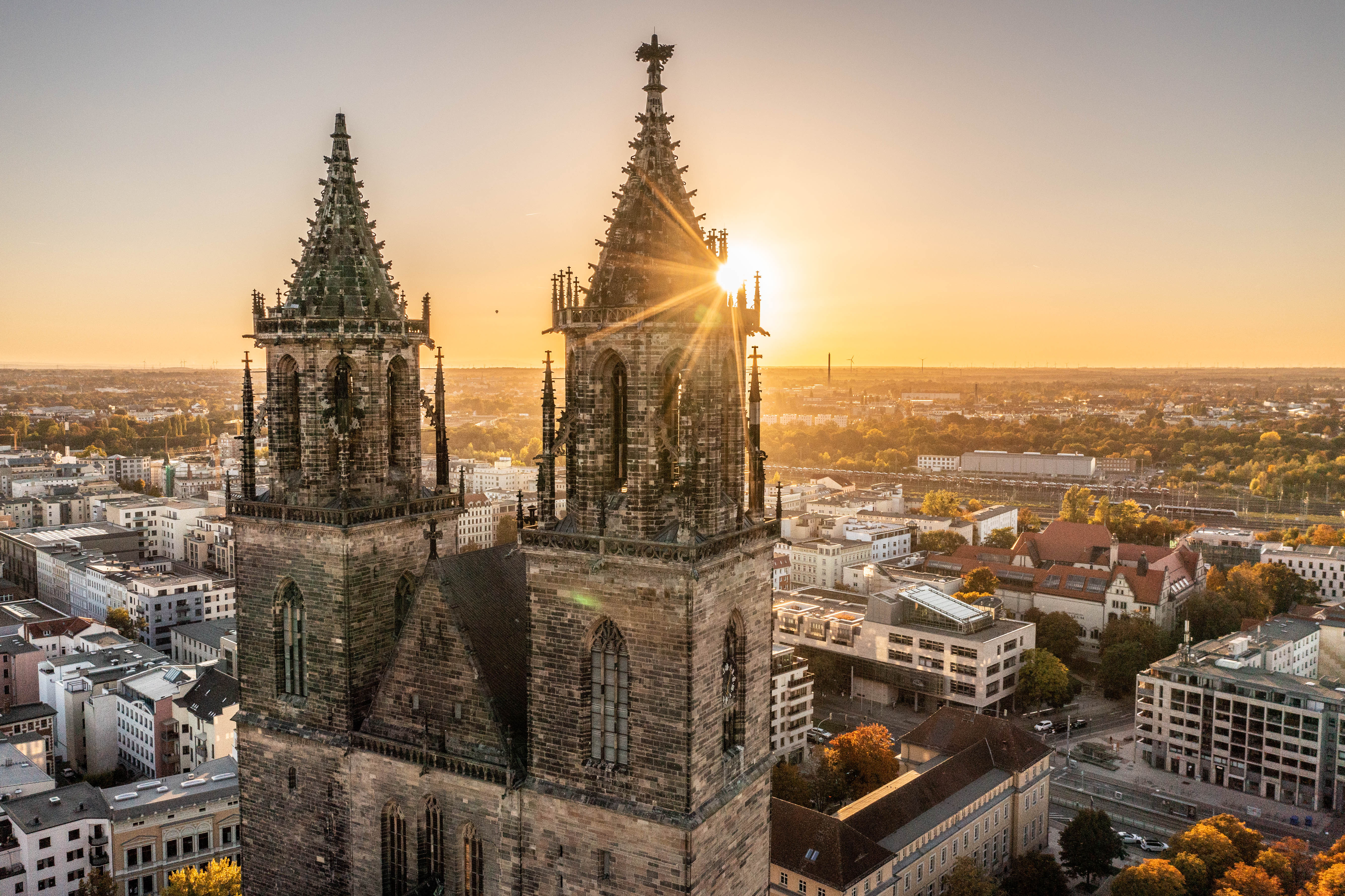
Magdeburg
Bastion of Protestantism
From 1497 to 1498, Luther attended the school of the "Brothers of the Common Life," a religious community that fostered a life of community and spirituality. This period laid the foundation for his later beliefs and his tireless commitment to reform.
In 1524, he returned to Magdeburg at the invitation of the mayor and delivered a moving sermon at St. John's Church on June 26, which initiated a profound transformation in the city. Inspired by Luther's words, parts of the council became open to new ideas and began to engage with the Reformation. Just a few days later, the Catholic Mass was abolished, and many of the Magdeburg congregations adopted the evangelical order of worship and church governance.
St. John's Church in Magdeburg ©MVGM GmbH, www.AndreasLander.de
In 1563, the Archbishop also converted to the Lutheran faith. This marked a turning point for the city, paving the way for the first evangelical service in the cathedral in 1567. Martin Luther, who closely followed the developments, sent Nikolaus von Amsdorf as the first superintendent to Magdeburg. Amsdorf seized the opportunity to establish a city school in the former Augustinian monastery, which was set to significantly reform the city's educational system. Magdeburg flourished and established itself as a shining bastion of German Protestantism, a place where new ideas and beliefs could thrive.
The Luther memorial erected in 1886 in front of St John's Church in Magdeburg©Harald Krieg, IMG Sachsen-Anhalt
June 26 is still celebrated today as a significant memorial day that commemorates the introduction of the Reformation in Magdeburg. In front of St. John's Church stands an impressive monument, created in 1886 by the renowned sculptor Emil Hundrieser, which honors Luther's work in this city. It serves as a symbol of the change and hope that the Reformation brought.Inside the Magdeburg Cathedral, visitors can discover a fascinating indulgence box from the time of the Dominican monk Johann Tetzel, embodying the profound changes of that era. These artifacts invite exploration of the history that comes to life and the roots of faith that made Magdeburg an important center of Protestantism.
Experience Magdeburg
Magdeburg, the state capital of Saxony-Anhalt, is a rewarding destination for a tour through German history; a Romanesque and Gothic city of art and culture.

The Green Citadel of Magdeburg ©Andreas Lander, Magdeburg Marketing Kongress und Tourismus GmbH)
To this day, 26 June continues to be celebrated as the day that Reformation was introduced into Magdeburg. A memorial in front of St. John’s Church, erected by the famed sculptor Emil Hundrieser in 1886, commemorates Luther's legacy in the city. Visitors to Magdeburg Cathedral can view a box in which indulgences, issued during the time of the Dominican monk, Johann Tetzel, were stored.
More information about Magdeburg
Header picture: ©Francesco Carovillano, DZT






